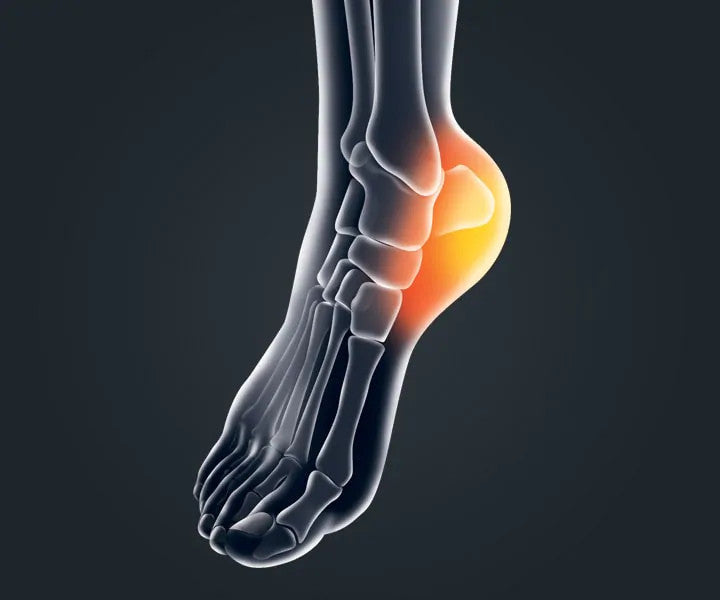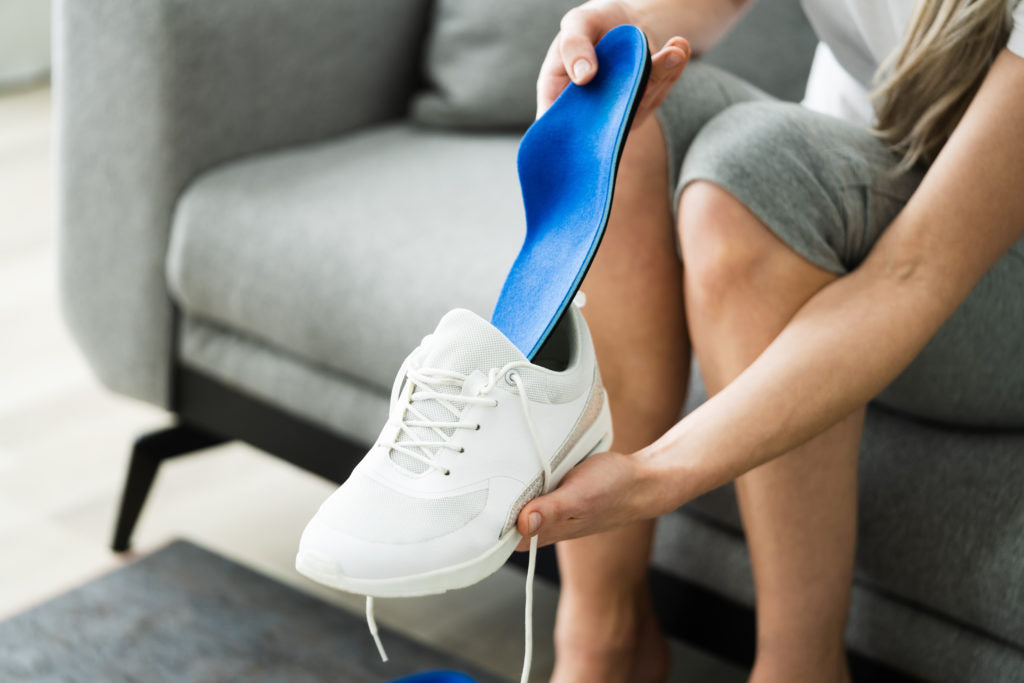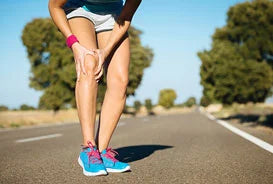
Heel pain is pain in the heel area that can vary in severity and location. It is most common in adults.
The heel is the first bone to contact the ground when walking and takes the full force of impact and the resulting shock of bearing weight during motion, resulting sometimes in sore heel pain. General heel pain tends to dissipate overnight and can reappear or worsen during prolonged periods of walking or standing.
Usually with rest, sore heels will resolve themselves. However, when you ignore the pain and continue partaking in activities that worsen the pain, this can result in chronic pain.
WHAT CAUSES HEEL PAIN?
Foot heel pain can generally be divided into two categories: pain on the bottom of the heel and pain behind the heel.
Pain on the bottom of the heel may be the result of:
• Bruising: It may be possible that you’ve recently bruised your heel, by stepping on a
hard object like a stone. You can experience bruising pain, even if there is no obvious discolouration.
• Plantar fasciitis: One of the most common causes of heel pain, plantar fasciitis can be a very painful condition. It is caused by
inflammation in the plantar fascia ligament, the tissue that connects the base of your toes to your heel bone. It is generally most painful in the morning after waking up and tends to get worse as the condition persists.
• Heel spur: Heel spurs, which are abnormal bone growths coming off the heel, can also cause heel pain.
• Other causes such as repetitive stress or shock to the heel, standing for prolonged periods and osteoarthritis.
Pain behind your heel may be the result of over-exerting yourself while running, or wearing shoes that rub or cut into the back of the heel. Pain behind the heel may build slowly over time, causing the skin to thicken, redden, and swell. A bump on the back of the heel, that feels tender and warm to the touch, may develop. This type of pain will generally flare up at the start of an activity and often hurts too much to wear normal shoes.

HOW TO HELP PREVENT HEEL PAIN?
There are a few ways you can help prevent heel pain, including:
• Wearing insoles or inserts in your shoes to help control abnormal foot motion and lessen the stress of everyday activities on your heel.
• Wearing properly fitting, supportive shoes
• Maintaining a healthy weight
• Making sure you give your body time to warm up when you exercise, and practicing good stretching techniques
HOW TO RELIEVE HEEL PAIN?
If you’re looking for treatments for heel pain relief:
• Rest: Taking a break from any physical activities that may be aggravating your condition.
• Stretch and exercise: It’s often recommended to try strengthening and stretch exercises to strengthen and improve the flexibility of your Achilles tendon and supporting structures. One helpful stretch can be leaning forward against a wall with the foot flat on the floor and the heel slightly elevated, and using an insert beneath your heel.
• Use ice: Place ice on the back of the heel to reduce inflammation and pain
• Add shoe inserts or orthotic devices in your shoes if you have heel pain when walking: Stress on your heel can be reduced by an insert that elevates the heel and cushions the force felt by the Achilles tendon. Try Dr. Scholl’s Orthotics for Heel Pain.
• Use an over-the-counter pain reliever as needed
What causes pain in the heel of foot?
There are a number of potential causes of pain in the heel of the foot. The most common causes are plantar fasciitis and Achilles tendonitis, general heel pain can develop due to aggravation of the heel area. This can occur more readily as we age and the fat pad that protects our heel bone degrades.
Plantar fasciitis is an inflammation in a band of connective tissue called the plantar fascia which connects the toes to the heel bone. The pain from plantar fasciitis is most commonly felt in or near the bottom of the heel.
Achilles tendonitis is an inflammation of the Achilles tendon which is the tendon that’s located at the bottom of the back of the calf, just above the back of the heel. The Achilles tendon connects the muscle of the calf to the heel bone. Pain from Achilles tendonitis is typically felt in the back of the heel.
There are also other causes of heel pain including:
Achilles tendon rupture – In addition to Achilles tendonitis, a rupture in the Achilles tendon can cause heel pain. The pain from a ruptured Achilles tendon is typically felt just above the back of the heel. Once the achilles ruptures, it no longer imparts pain to the heel. It is the stretching of the achilles that pulls on the heel prior to rupture can lead to pain being sensed in the heel and at the site of achilles stretch.
Heel spurs – In some cases, heel spurs can cause heel pain although oftentimes heel spurs are painless. Heel spurs are bony growths that form on the heel bone due to calcium deposits. Pain from heel spurs is similar to pain associated with plantar fasciitis.
Stress fractures – It’s common for people who engage in sports that involve regular jumping and running to experience stress fractures, very small cracks in the bone typically caused by repetitive stress.
Arthritis – Certain types of arthritis such as rheumatoid arthritis can contribute to heel pain.
Bursitis – Heel pain can be caused by bursitis, an inflammation of the bursae, fluid-filled sacs which lubricate and cushion the joints.
What to do for heel pain
If you have heel pain that doesn’t go away and is interfering with your daily activities, see a doctor in order to determine the cause of the heel pain and for guidance on how to relieve heel pain. There’s no easy way to fix heel pain. It’s common for doctors to recommend starting with lifestyle changes and conservative therapies and treatment options such as:
Rest – Taking pressure off of the heel with rest is a classic way to get rid of heel pain. Although it’s difficult to stop heel pain completely, you can experience significant improvements by simply staying off of your feet as much as you can to give the pain time to resolve.
Ice – Regular icing of the foot can help to heal heel pain by reducing inflammation. You can ice up to 20 minutes at a time and repeat several times a day.
Stretching exercises – Regular stretching can often be beneficial for heel pain, especially for the primary causes of heel pain which are plantar fasciitis and Achilles tendonitis. A physical therapist can help demonstrate a number of effective stretching exercises based on your needs.
Inserts, orthotics and insoles – Using inserts, orthotics and insoles with shoes can be helpful for reducing heel pain. These products add support and cushioning to help minimize stress on the feet.
Pain relievers – Ask your healthcare provider if it’s safe to take over-the-counter pain relievers such as ibuprofen and naproxen to help heel pain.
In cases where heel pain doesn’t improve with conservative solutions, a doctor can recommend other options such as prescription drugs, cortisone injections or surgery if necessary to treat heel pain.
How to walk in heels without pain
If it’s painful to walk in heels, it’s best to minimize the amount of time wearing the heels in order to reduce pressure on the feet. Cushions and inserts specially designed for use in high heels are available. These products can help reduce pressure and ease pain.
What causes pain in the back of the heel?
The most common cause of pain in the back of the heel is Achilles tendonitis. This is an inflammation of the Achilles tendon, the tendon that connects the calf muscle to the heel bone. There may be other causes of pain in the back of the heel as well. If you your pain is severe and doesn’t go away, it’s important to see a doctor.
What causes heel pain when walking?
There are a number of reasons why you might experience heel pain when walking. Although the pressure that’s exerted on the feet when walking may worsen the pain, the walking itself may not be the underlying cause of heel pain. Plantar fasciitis and Achilles tendonitis are the most common sources of heel pain but there are other possible causes as well including certain types of arthritis, bursitis, stress fractures and heel spurs.
How to relieve heel spur pain
Ask your healthcare provider for guidance on how to relieve heel spur pain. Many doctors recommend starting with lifestyle changes and conservative treatments that include ice and rest, shoe inserts or orthotics, stretching exercises, night splints and over-the-counter pain relievers. In cases where the pain from heel spurs is intense and doesn’t improve despite best efforts, a doctor may prescribe medication. Cortisone injections and surgery may also be recommended for more serious cases of bone spurs.
Additional Resources
• https://www.mayoclinic.org/symptoms/heel-pain/basics/causes/sym-20050788
• https://www.mayoclinic.org/diseases-conditions/plantar-fasciitis/symptoms-causes/syc-20354846
• https://www.healthline.com/health/achilles-tendinitis
• https://www.webmd.com/pain-management/heel-spurs-pain-causes-symptoms-treatments
• https://www.mayoclinic.org/diseases-conditions/stress-fractures/symptoms-causes/syc-20354057
• https://orthoinfo.aaos.org/en/diseases–conditions/rheumatoid-arthritis-of-the-foot-and-ankle
• https://www.healthline.com/health/bursitis
• https://www.ncbi.nlm.nih.gov/pmc/articles/PMC3603626/
• https://www.mayoclinic.org/diseases-conditions/achilles-tendon-rupture/symptoms-causes/syc-20353234
• https://www.webmd.com/fitness-exercise/guide/achilles-tendon-injury#1


